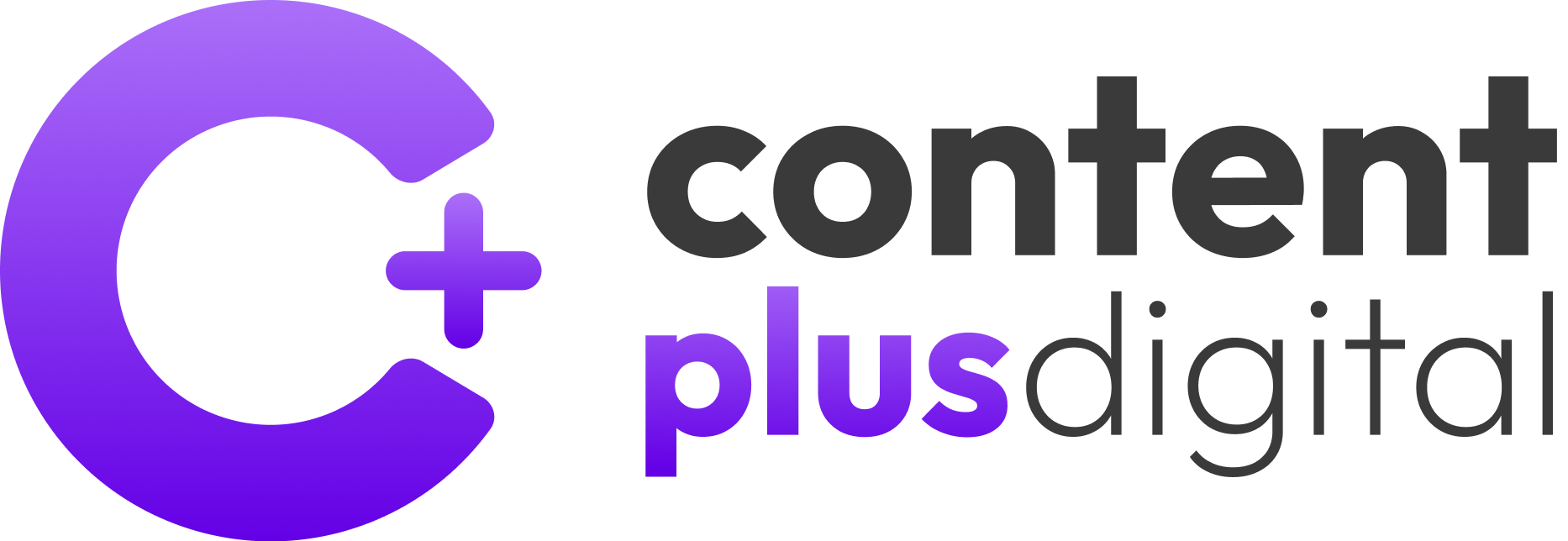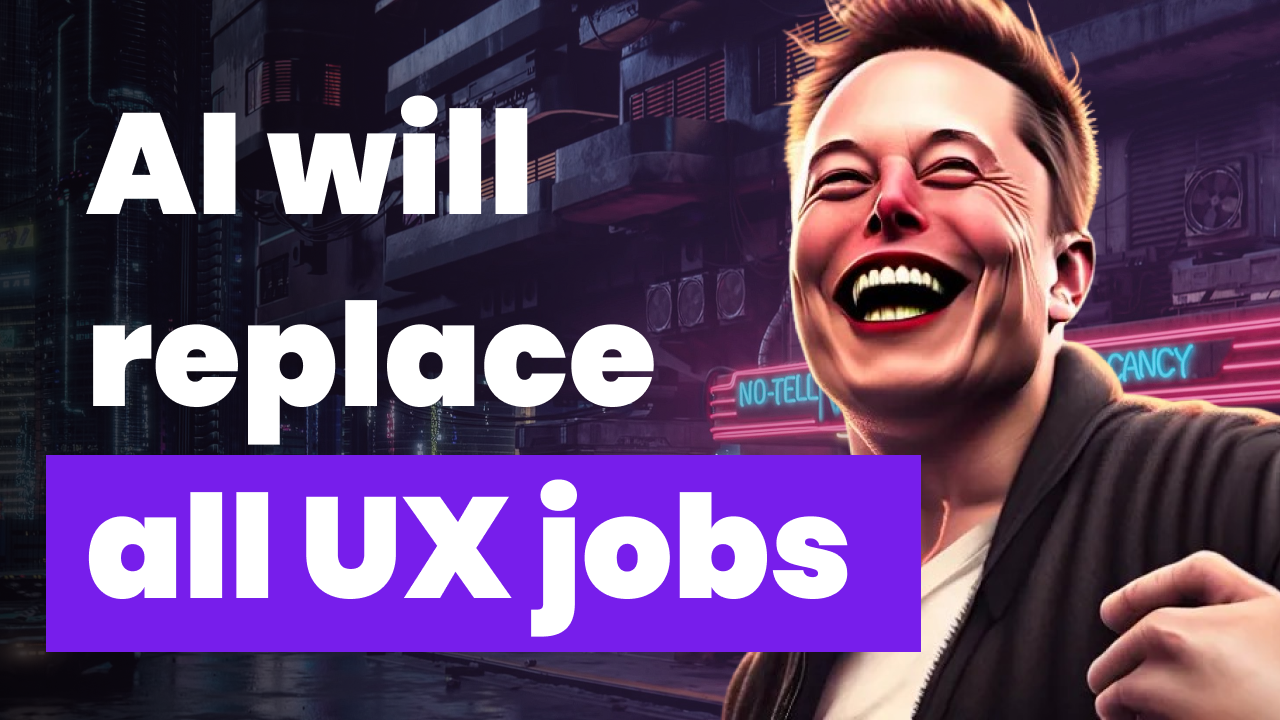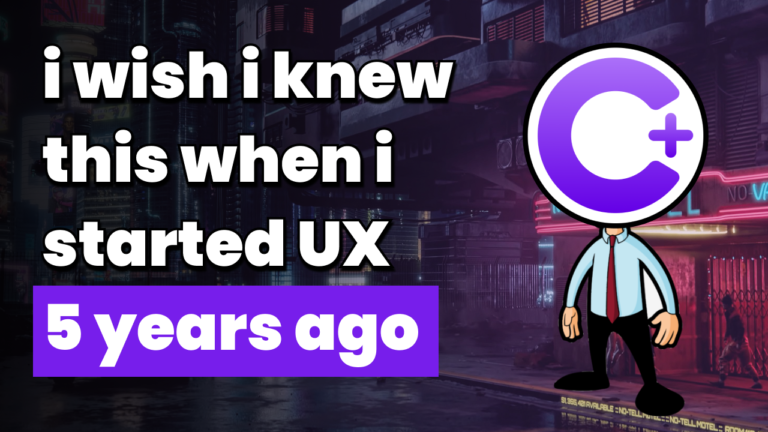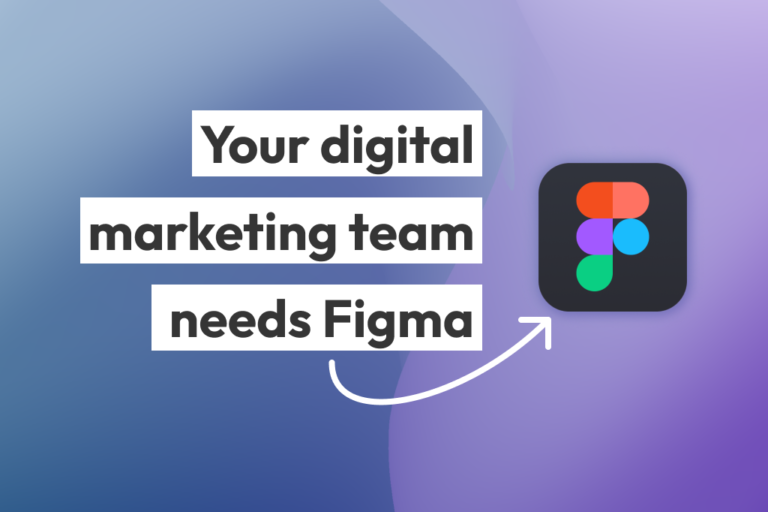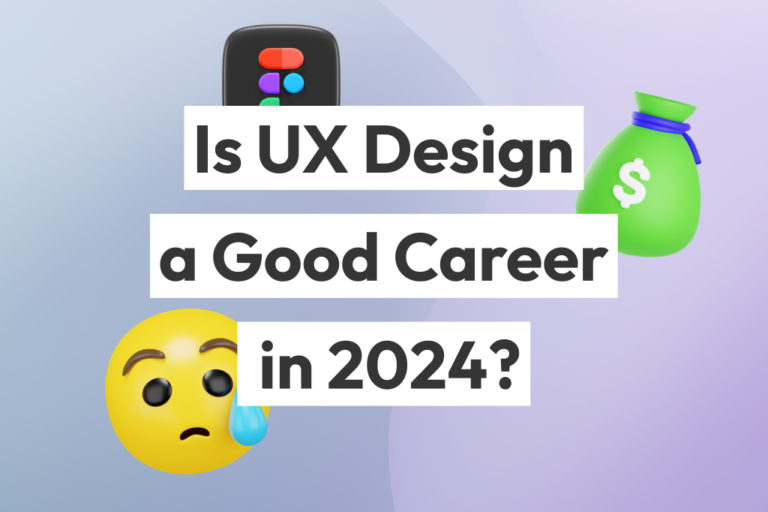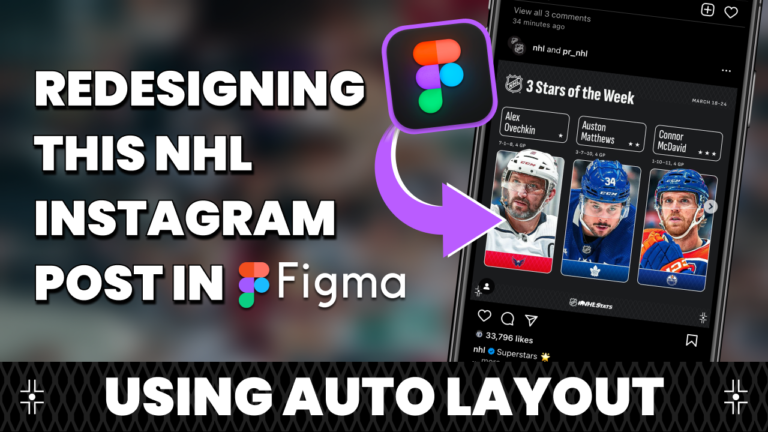Will AI Replace UX UI Designers? (4 Reasons)
There is a lot of anxiety around how AI will impact industries in the near future. In this article we explore the question “Will AI replace UX UI Designers?”.
To watch the video instead of read the article, check it out below:
Reasons Why AI Will Replace All UX UI Jobs
So the question is, will AI replace UX UI designers in the near future? To properly analyze this we need to look at all the stages of the UX UI design process.
We will follow along with this diagram of the UX design process and analyze each phase individually:
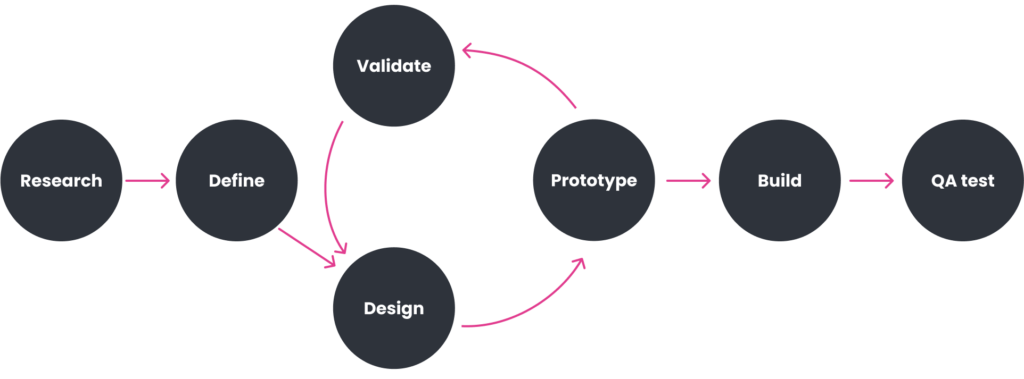
Reason 1 – AI is great at doing research
AI has a the ability to do research on topics much more efficiently than the average human.
Especially when UX design teams are getting smaller and companies are relying on just a few designers to be responsible for each phase of the process.
AI is going to become more and more relied upon for the research responsibilities and will only get better.
AI is great at doing UX research and the following are just a few of the reasons why:
- Automated Data Collection: AI-powered tools can automate the collection of user data from various sources, including website analytics, social media platforms, and user feedback channels. By analyzing large volumes of data quickly and efficiently, AI can provide designers with valuable insights into user behavior, preferences, and pain points.
- Natural Language Processing (NLP): NLP algorithms can analyze textual data from sources such as user interviews, surveys, and online reviews to extract key themes, sentiments, and trends. This helps designers gain a deeper understanding of user needs and preferences, which can inform the design process.
- User Persona Generation: AI can assist in creating user personas by analyzing demographic data, behavior patterns, and other user attributes. By clustering users into distinct personas based on similarities and differences, AI can help designers better tailor their designs to the needs and preferences of different user groups.
- Market and Competitor Analysis: AI-powered tools can analyze market trends, competitor products, and customer reviews to identify opportunities and gaps in the market. By leveraging machine learning algorithms, designers can gain insights into emerging trends and competitive strategies, helping them make more informed design decisions.
- Predictive Analytics: AI can use predictive analytics to forecast future user behavior based on historical data. By analyzing patterns and trends, AI can help designers anticipate user needs and preferences, enabling them to design more intuitive and user-friendly experiences.
- Content Analysis and Categorization: AI algorithms can analyze and categorize large volumes of content, such as user-generated reviews and feedback, into meaningful categories and themes. This helps designers identify common pain points and areas for improvement, guiding the design process.
- User Feedback Analysis: AI can analyze user feedback from various sources, such as surveys, social media, and customer support interactions, to identify recurring issues and sentiment trends. By aggregating and summarizing user feedback, AI can help designers prioritize areas for improvement and guide the design process iteratively.
Overall, AI has the potential to augment the research phase of the UX design process by automating data collection and analysis, providing deeper insights into user behavior and preferences, and enabling designers to make more informed design decisions. By leveraging AI-powered tools, designers can gain a competitive edge in creating user-centric and impactful design solutions.
Reason 2 – AI is going to start building UI designs
AI is starting to creep into the workflow of design programs and soon enough will be able to create user friendly interfaces with just a few prompts.
On top of being able to bang out a great looking UI, the AI will be able to interpret the research findings from the previous stage and incorporate those insights into the design.
UX UI Design is Not That Creative
I’m sorry to break it to you, but UX UI is a lot less creative than your LinkedIn feed will have you believe.
As YouTuber Mizko says at 5:08 in this video, UX UI design is really not that creative because:
- A lot of design patterns are standardized
- Best practices have been established
- Designs are built to drive business goals
With this being said, it’s very realistic to imagine a time in the near future where AI can analyze your user research and then build out a UI using design patterns which have been tested and proven for your exact user scenario or context.
There are only a finite amount of UI patterns that match up with the specific user goals of your product, and once they have all been established and validated there really is not reason to have designers try and reinvent the wheel anymore.
Design Tools are Adopting AI
Whether its Adobe introducing generative AI into their products, Figma purchasing AI solutions to integrate into their system, or new UX UI design startups that are focused on AI from the beginning, it is clear that AI is going to start becoming a main tool for design.
Reason 3 – AI will start to be able to build UX UI Prototypes
Figma is able to build impressive prototypes already, and once they integrate AI into their toolset there will be no going back.
This reason doesn’t need a large explanation, because if these tools are able to produce the UI as discussed in Reason 2, then the leap to AI prototyping will be easy-peasy lemon squeezy.
Reason 4 – AI will be able to build functional working software
Ok, I am going to preface this by saying of course AI is not going to completely replace software developers – yet.
But there are no code / low code tools out there in the market already and it’s only a matter of time before AI is integrated into the workflow.
Tools like bubble.io, flutterflow.io are already making waves with their products and giving non technical go getters the ability to build their own functioning applications without the need to hire software engineers.
Once these tools integrate AI capabilities it will make building software that much more accessible to the average person.
Will AI Replace UX UI Designers?
So, will AI replace UX UI designers?
Well, as we have seen in our findings today it’s clear that AI is creeping into each individual stage of the design process.
I don’t think it is a question of IF AI will replace UX UI designers but when.
When someone figures out how to integrate each step of this process and package it into one singular product (I’m looking at you Figma) then it’s not hard to imagine how much it would change the landscape of UX design careers.
But the good news is that AI won’t be affecting only UX designers – it’s going to affect everyone equally (yay!) so we can all become useless together.
Like Elon Musk says “AI will replace all human jobs”
